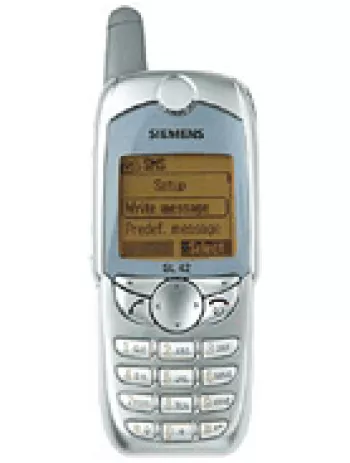Comprehensive Review of the Siemens A31 Features Pricing and Performance Insights

Introduction to Siemens A31
The Siemens A31 is a classic feature phone released by Siemens in November 2005. Although considered basic by today's standards, it had its own charm and utility during the mid-2000s when smartphones were not as prevalent. This article takes a comprehensive look into the device’s specifications, design, and functionality that appealed to a different era of mobile phone users.
Design and Build
The Siemens A31 is crafted with compactness and portability in mind. At dimensions of 102 x 46 x 17.6 mm and a weight of just 85 g, the A31 was light and easy to carry around, fitting comfortably in the hand or pocket. Its casing was available in two distinct colors: Anthracite and Ruby Red, catering to users seeking a simple yet appealing design.
Display
The phone featured a CSTN display capable of showcasing images with 65K colors. Although the current generation may not find this impressive, it was standard for feature phones at that time. The screen resolution was 128 x 128 pixels, which was sufficient for navigating through the phone’s menu and reading text messages.
Battery Performance
Powered by a removable Li-Ion 820 mAh battery, the Siemens A31 was quite efficient. It boasted a standby time of up to 270 hours and a talk time of up to 5 hours, showcasing considerable battery life fitting for its functionalities and intended use. Users appreciated the reliability and longevity of its power, especially during times when charging facilities were scarce.
Network Capabilities
The Siemens A31 was built with GSM technology, operating on GSM 900 / 1800 bands. It featured Class 8 GPRS for basic data connectivity, though it lacked EDGE. For voice communication and text messaging, the network capabilities were sufficient for the needs of its era.
Memory and Storage
Internally, the Siemens A31 offered only 1.5MB of storage and did not support memory card slots. While this may sound insufficient today, at the time, it provided enough space for saving essential contacts and a few message logs. The phonebook feature allowed users to save contacts and manage call records for dialed, received, and missed calls, capped at 10 entries each.
Sound and Alerts
The phone came equipped with a loudspeaker and supported vibration alerts alongside polyphonic ringtones, accommodating 32 tones. While there was no standard 3.5mm jack for headphones, the built-in speaker was adequate for listening to ringtones and hands-free communication.
Communication Features
Despite the absence of modern connectivity features like WLAN and Bluetooth, the Siemens A31 facilitated essential communication through SMS, EMS, and MMS. Internet browsing through the WAP 1.2.1 browser was an available feature at a time when mobile internet was still in its infancy.
Additional Features
The Siemens A31 also supported Java MIDP 1.0, which allowed the installation of basic Java applications and downloadable games, adding a layer of entertainment to the basic phone. Although it didn't have advanced applications, it managed to keep users engaged with its limited available games.
Durability and Longevity
Known for its build quality, the Siemens A31 was resistant to common wear and tear, making it a durable choice for everyday use. The phone’s simplicity and robust construction often ensured it lasted for years, a testament to Siemens' reputation for delivering reliable mobile devices.
Conclusion
To sum up, the Siemens A31 represented an era of mobile phones focused on fundamental communications rather than the multifunctional devices we see today. While lacking modern features, its reliability, and straightforwardness made it an appealing choice for users who needed a dependable phone for calls and texts.
Key Features of Siemens A31
- GSM Technology supporting GSM 900 / 1800 bands
- Lightweight design (85 g / 3.00 oz) for portability
- Compact dimensions (102 x 46 x 17.6 mm)
- CSTN Display with 65K colors
- Resolution of 128 x 128 pixels
- Internal storage of 1.5MB
- Phonebook capability
- Supports SMS, EMS, MMS messaging
- WAP 1.2.1 browser for basic internet access
- Java MIDP 1.0 support for applications
- Removable Li-Ion 820 mAh battery
- Stand-by time up to 270 hours
- Talk time up to 5 hours
- Available in Anthracite and Ruby Red colors
Disadvantages of Siemens A31
- Lack of EDGE support for faster internet speeds.
- No external memory card slot to expand storage beyond 1.5MB.
- Absent camera function.
- No 3.5mm headphone jack for standard audio output.
- Limited connectivity options: No WLAN, Bluetooth, GPS, Radio, or USB.
- CSTN display with limited 65K colors and low resolution (128 x 128 pixels).
- The device is discontinued, leading to potentially limited support.

View Also
More Phones
All Rights Reserved +14266 Phones © Mobilawy 2025

























